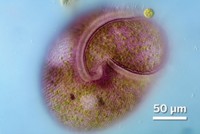Advertisement
Grab your lab coat. Let's get started
Welcome!
Welcome!
Create an account below to get 6 C&EN articles per month, receive newsletters and more - all free.
It seems this is your first time logging in online. Please enter the following information to continue.
As an ACS member you automatically get access to this site. All we need is few more details to create your reading experience.
Not you? Sign in with a different account.
Not you? Sign in with a different account.
ERROR 1
ERROR 1
ERROR 2
ERROR 2
ERROR 2
ERROR 2
ERROR 2
Password and Confirm password must match.
If you have an ACS member number, please enter it here so we can link this account to your membership. (optional)
ERROR 2
ACS values your privacy. By submitting your information, you are gaining access to C&EN and subscribing to our weekly newsletter. We use the information you provide to make your reading experience better, and we will never sell your data to third party members.
Environment
Sponge Symbionts Sequester Phosphorus
Microbes could help solve the mystery of a ‘missing’ nutrient in marine ecosystems
by Matt Davenport
March 2, 2015
| A version of this story appeared in
Volume 93, Issue 9
Coral reefs have mystified scientists for decades. Reefs support dazzlingly diverse ecosystems even though the water surrounding them appears to lack phosphorus, an element essential to life. A team of researchers led by Russell T. Hill of the University of Maryland has now shown that bacteria living in sponges could be sopping up substantial amounts of phosphorus and delivering it to the food chain as polyphosphate (Proc. Natl. Acad. Sci. USA 2015, DOI: 10.1073/pnas.1423768112). While looking for nitrogen-fixing bacteria under a microscope, the team inadvertently discovered that three species of sponges from the Conch Reef, in the Florida Keys, harbored polyphosphate granules. Fan Zhang, a graduate student on the team, stained the bacteria with a dye that binds to DNA and normally fluoresces blue light. Zhang instead observed a yellow glow, which the dye can emit when bound to polyphosphate. The team confirmed the compound was responsible for the yellow shift by using energy-dispersive X-ray spectroscopy. The team also found polyphosphate within microbial sponge symbionts and in bacteria cultured from sponge tissue, indicating the crystals are microbial in origin.




Join the conversation
Contact the reporter
Submit a Letter to the Editor for publication
Engage with us on Twitter